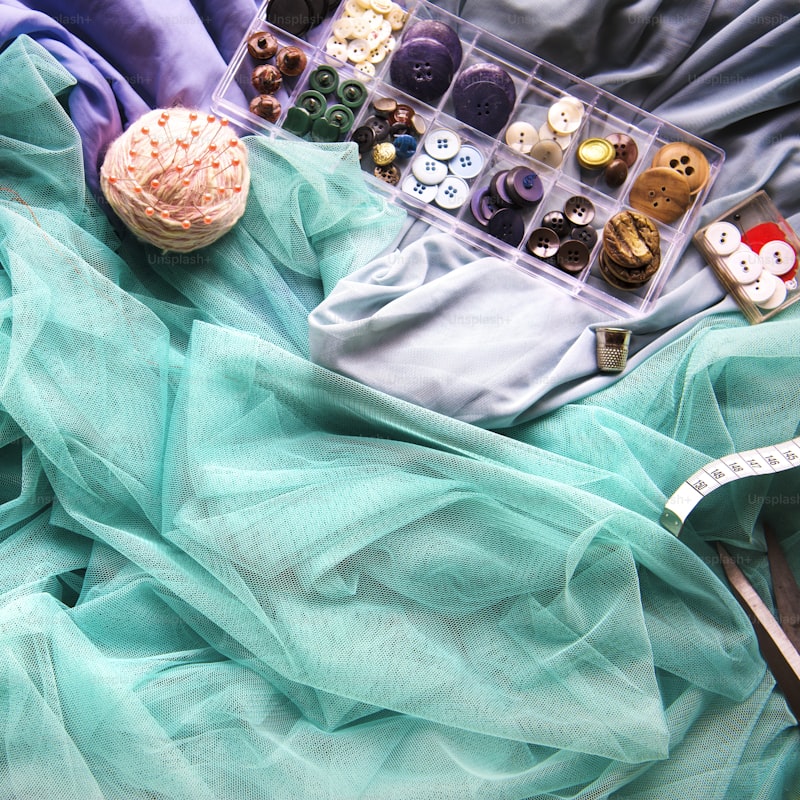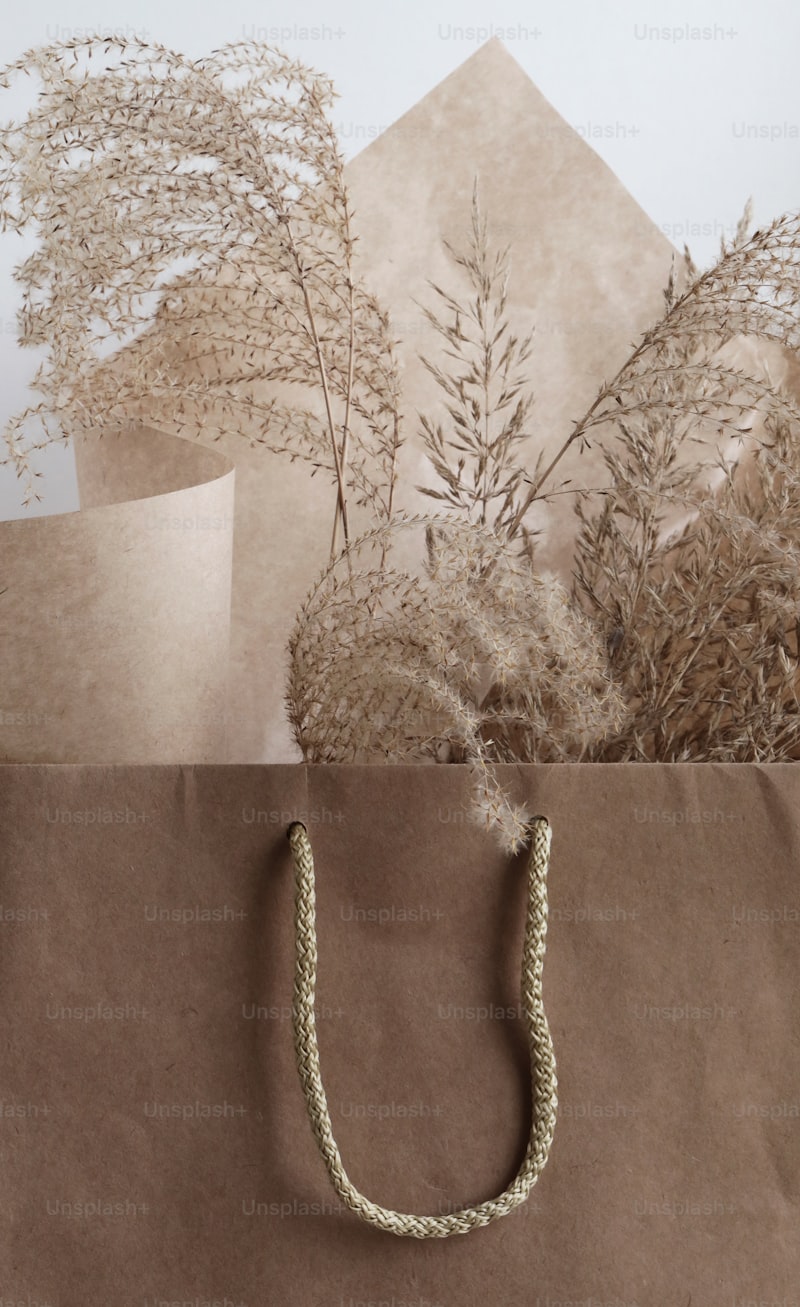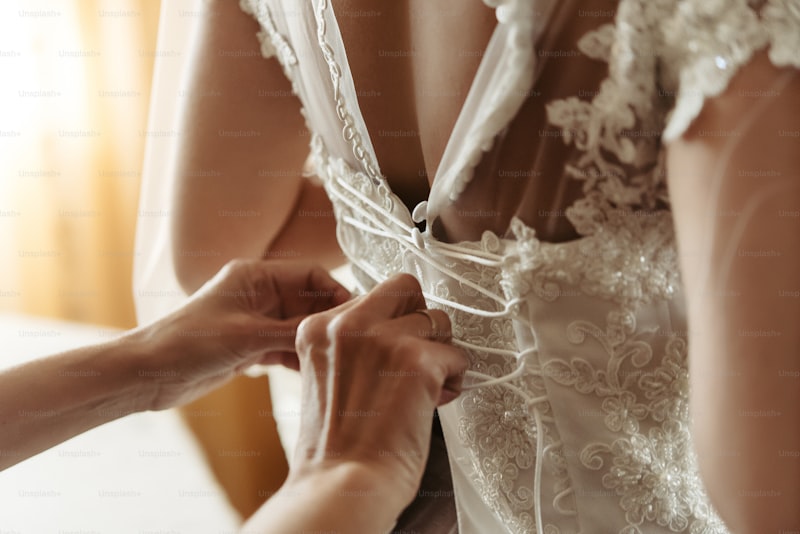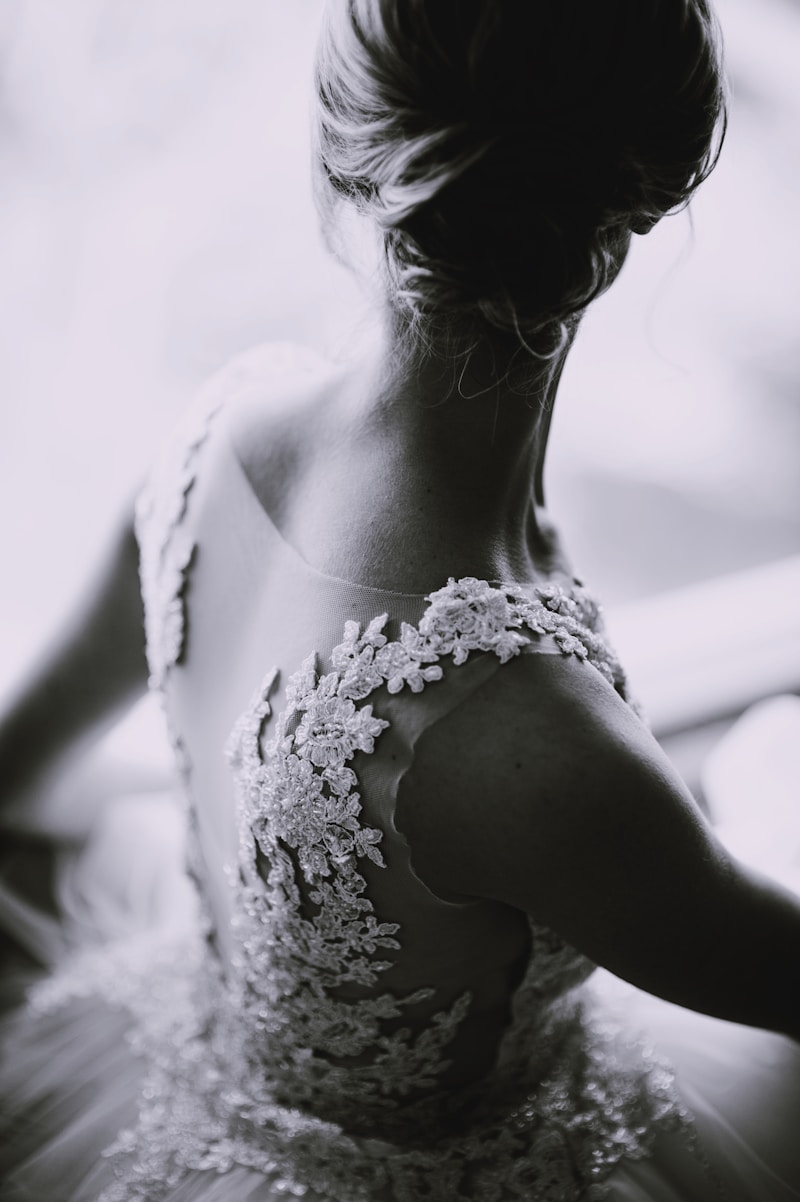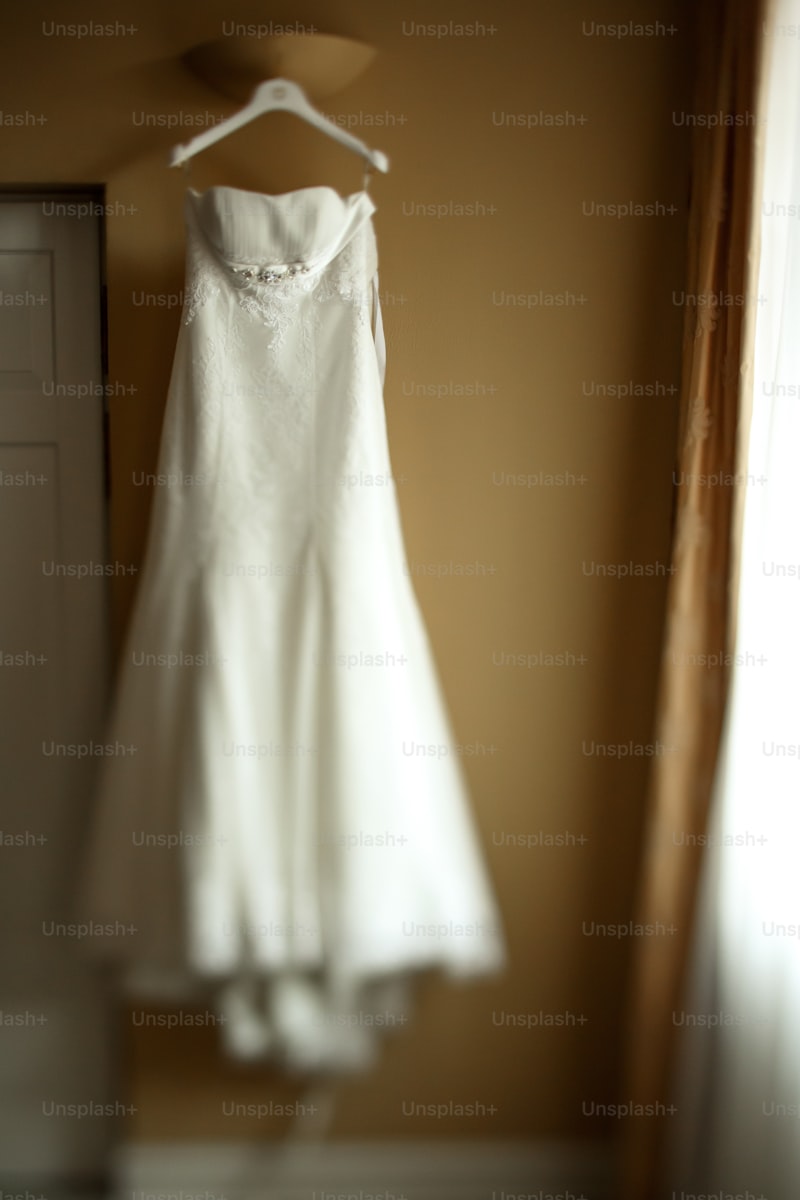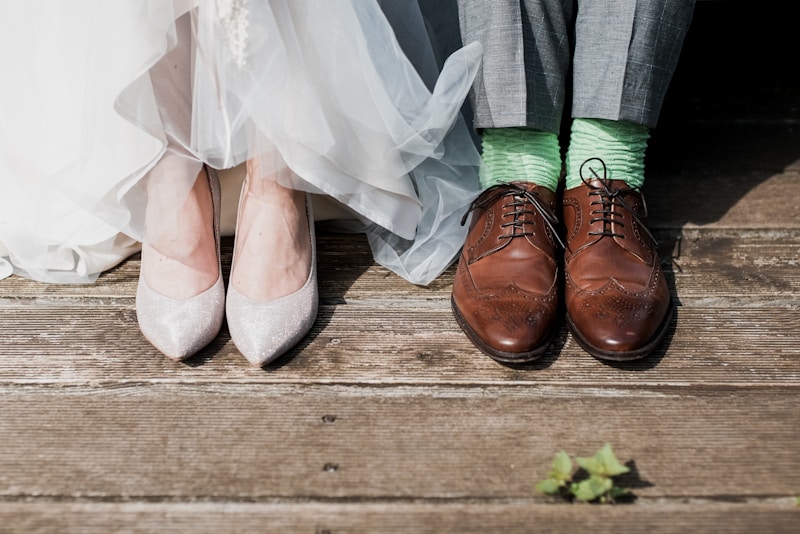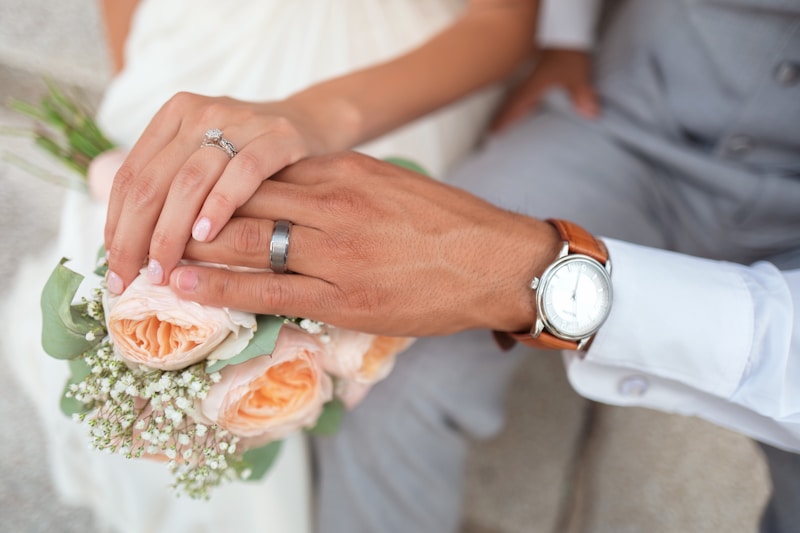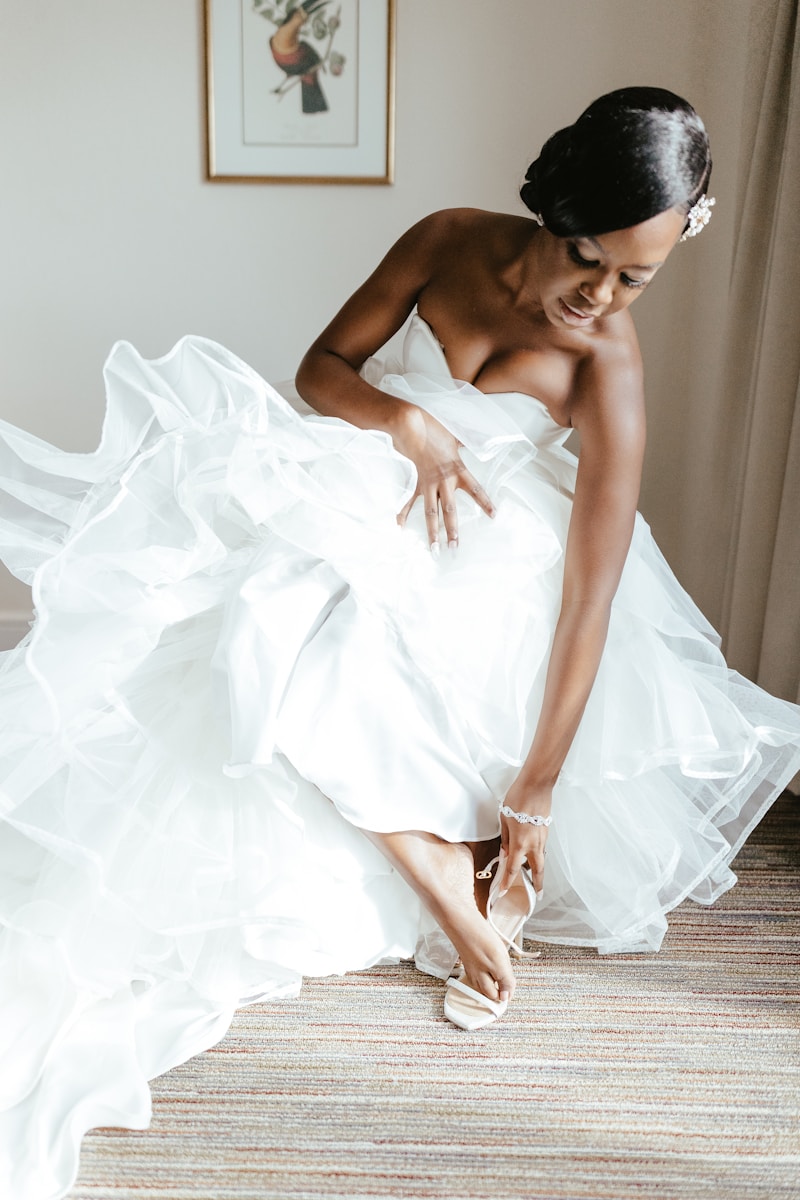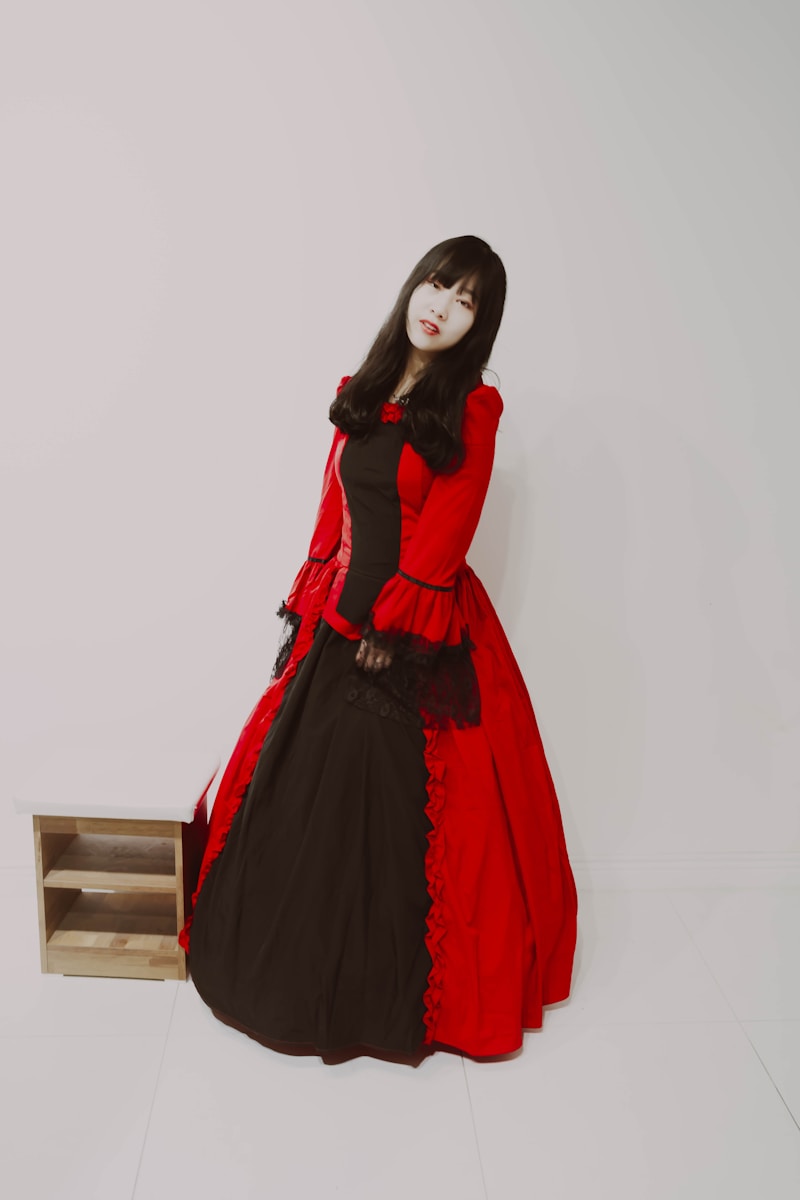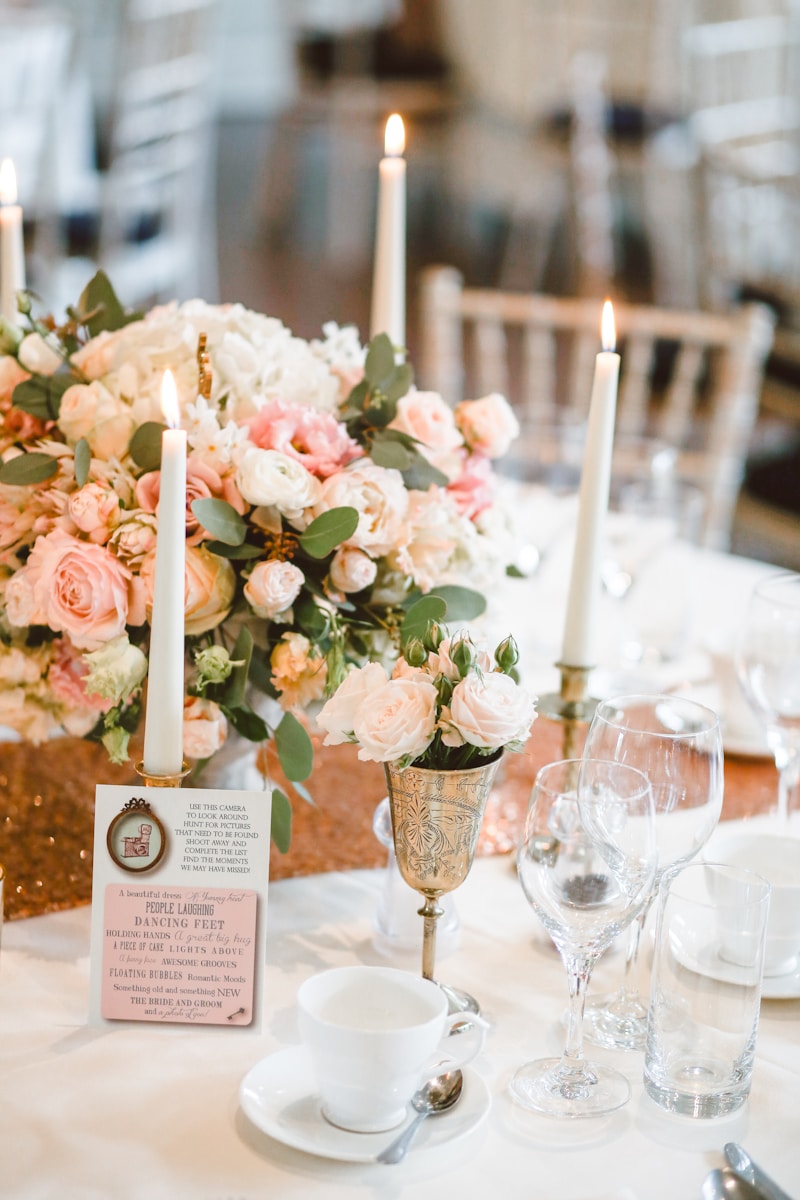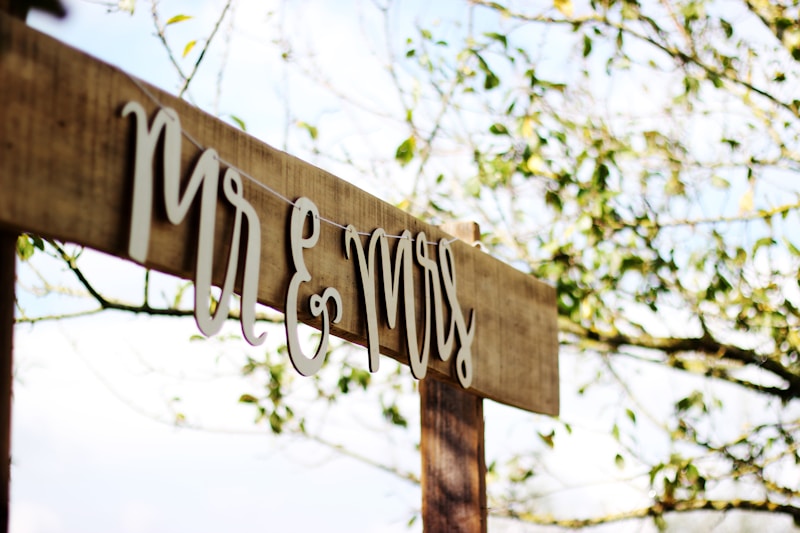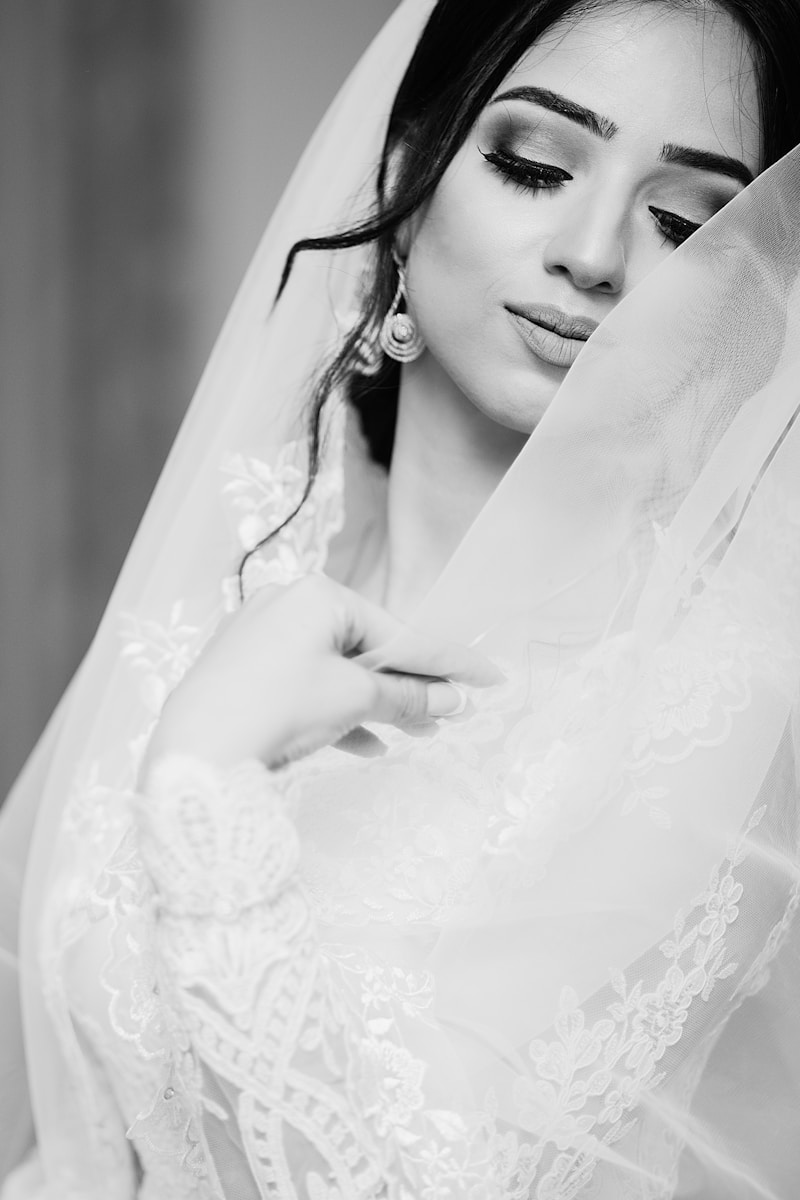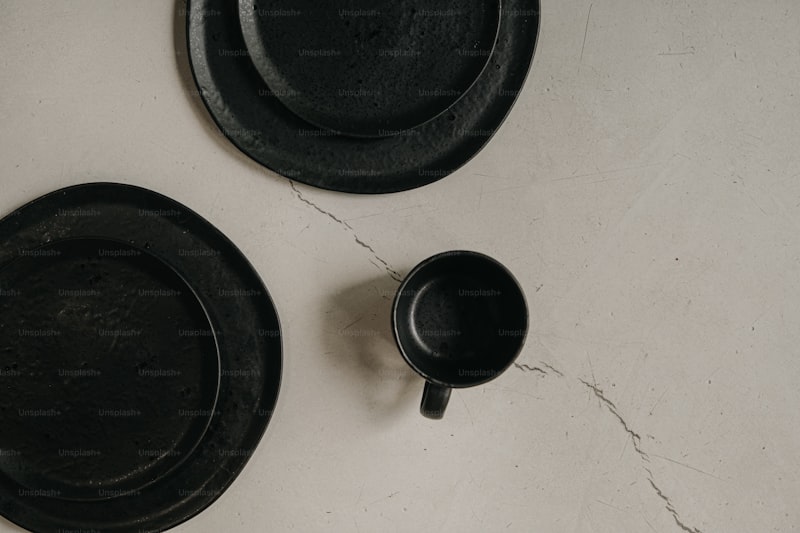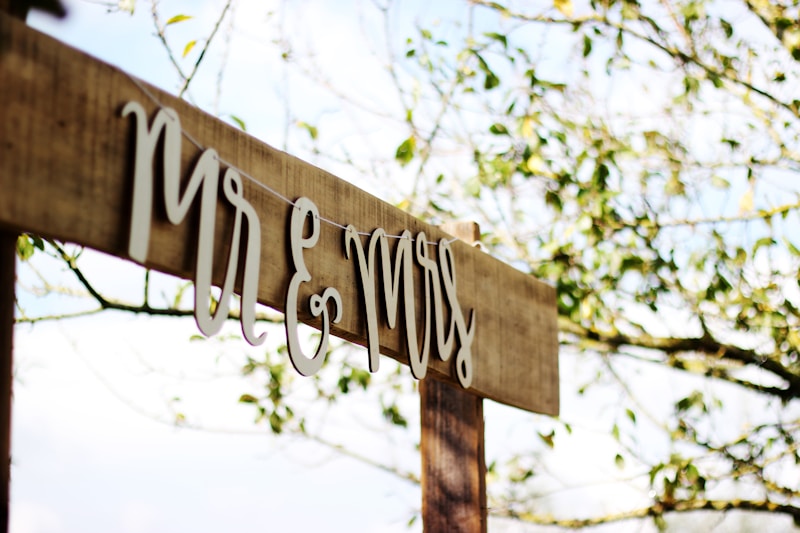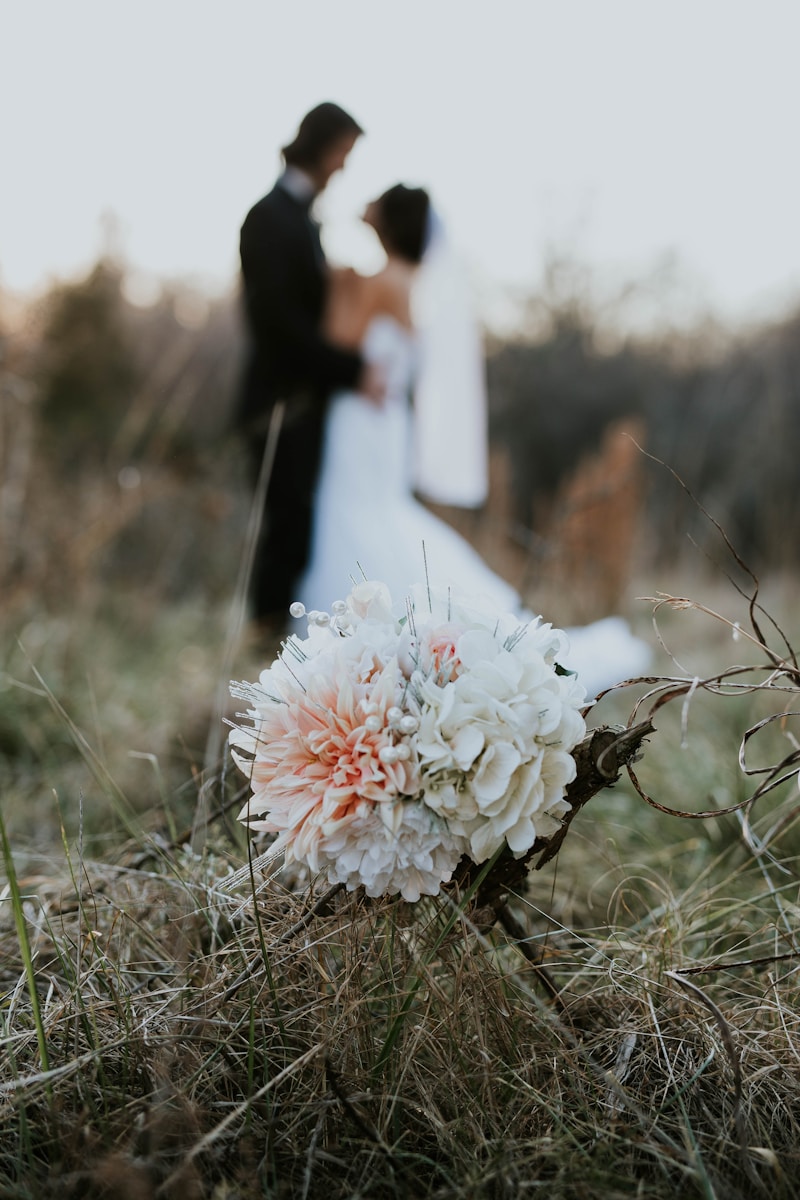Preservation Boxes for Sentimental Bridal Wear: A Lasting Legacy
Optimizing Preservation Boxes for Sentimental Bridal WearWeddings are not just milestones but a collection of memories wrapped in love and joy. One of the most cherished pieces of a wedding day is the bridal wear, often infused with deep sentiment. Over time, the desire to preserve these precious garments for future generations has led to the growing popularity of preservation boxes specifically designed for sentimental bridal wear. In this comprehensive article, we will delve into the importance of preservation boxes, how to choose the right one, and other related aspects that will help you keep your wedding memories intact.Understanding the Importance of Preservation BoxesPreservation boxes serve as a protective solution for bridal dresses, veils, and other attire worn on the wedding day. They are designed not just to store, but to maintain the integrity and condition of these precious items. In the face of time, a preservation box can slow down yellowing, fabric degradation, and other forms of damage caused by environmental factors.Why Use Preservation Boxes?The primary reasons for using preservation boxes for sentimental bridal wear include:Protection from Environmental Damage: Light, dust, and pollutants can deteriorate fabric over time. Preservation boxes shield these garments from harmful elements.Prevention of Physical Damage: Many preservation boxes are designed with acid-free materials, which prevent yellowing or discoloration, thereby extending the life of the fabr...
Choosing the Right Cleaning Products: A Comprehensive Guide
IntroductionIn our daily lives, cleanliness plays an integral role in maintaining not only the aesthetics but also the health of our living spaces. With so many cleaning products available on the market, choosing the right cleaning products can be overwhelming. This article provides you with insights on selecting the most effective cleaning products, ensuring you make informed choices that cater to your specific cleaning needs.The Importance of Choosing the Right Cleaning ProductsSelecting the correct cleaning products is crucial for various reasons. Firstly, it helps in maintaining hygiene, reducing allergens, and preventing the spread of germs. Secondly, using unsuitable products can lead to damage on surfaces or materials, resulting in costly repairs. Lastly, certain cleaning agents can have adverse effects on the environment or your health if not chosen wisely. Thus, understanding what to look for in cleaning products can benefit your home and the planet.Factors to Consider When Choosing Cleaning ProductsTo help you navigate the multitude of choices, here are the essential factors to consider:1. IngredientsUnderstanding the ingredients in cleaning products is paramount. Look for products that are biodegradable and free from harmful chemicals such as phosphates, bleach, and synthetic fragrances. Natural cleaning products often offer a safer option for families, especially those with children or pets.2. PurposeDifferent cleaning tasks require different products. It's import...
Ultimate Guide to Long-lasting Preservation for Heirloom Dresses
Understanding the Importance of Preserving Heirloom DressesHeirloom dresses are not just garments; they are cherished artifacts that carry emotional value and historical significance. These treasured pieces often hold memories of special occasions, family traditions, and even significant cultural events. Therefore, ensuring their long-lasting preservation is paramount. In this guide, we will explore effective methods for extending the life of heirloom dresses, tips for storage, cleaning techniques, and common questions surrounding this topic.Why Heirloom Dresses Need Special Care?Heirloom dresses can be made from delicate fabrics, intricate lace, and detailed embroidery. These materials are prone to wear and damage if not handled correctly. Here are a few specific reasons why special care is needed: Material Sensitivity: Many heirloom dresses are crafted from materials like silk, tulle, or cotton blends that can be easily damaged. Sentimental Value: Heirloom dresses often represent significant family history, making their preservation a matter of emotional importance. Potential for Deterioration: Without proper care, natural fibers can deteriorate due to environmental factors, leading to irreversible damage.Effective Methods for Long-lasting PreservationTo achieve long-lasting preservation for heirloom dresses, follow these essential methods:1. Proper Cleaning TechniquesBefore storing your heirloom dress, it's crucial to clean it appropriately. Here's how:MethodDescr...
Ultimate Guide: Tips for DIY Wedding Dress Preservation
Your wedding dress is not just a garment; it is a cherished symbol of one of the most important days in your life. Preserving it properly means you can relive those special memories whenever you take it out. In this comprehensive guide, we will explore essential tips for DIY wedding dress preservation, ensuring that your dress remains in pristine condition for years to come.Understanding the Importance of Wedding Dress PreservationWedding dress preservation is crucial for maintaining the integrity of the fabric and the beauty of your gown. Over time, exposure to light, dust, and pollutants can cause yellowing and damage. Many brides underestimate the importance of preservation, which can lead to irreversible wear and tear. Here are some reasons why you should consider preserving your dress:Emotional Value: Your wedding dress carries memories and emotions that you may want to revisit.Resale Value: A well-preserved dress can fetch a higher resale price if you decide to sell it in the future.Generational Pass-Down: Preserving your dress allows future generations to appreciate or wear it.Choosing the Right Time for PreservationThe best time to start the preservation process is as soon as the wedding festivities conclude. Ideally, you should aim to preserve your dress within six months after your wedding day to ensure that any stains or odors do not set in. The longer you wait, the more difficult it may be to remove stains effectively.Essential Tips for DIY Wedding Dress Preservat...
Reviving the Look of an Aging Wedding Gown: A Complete Guide
IntroductionWedding gowns are often treasured keepsakes, symbolizing one of the most significant days in a person's life. However, over time, these beautiful dresses may lose their luster, becoming yellowed, stained, or simply outdated in style. If you’re looking to refresh and revitalize your treasured wedding gown, you’re in the right place. In this guide, we will explore various methods to rejuvenate your wedding gown, ensuring it retains its beauty and charm for years to come.Understanding the Aging of Wedding GownsLike any piece of clothing, wedding gowns are subject to wear and tear as well as environmental factors. Several reasons contribute to the aging of a wedding gown: Fabric Composition: Natural fabrics like silk and cotton may deteriorate faster than synthetic materials. Storage Conditions: Exposure to light, heat, and humidity can lead to discoloration and damage. Stains: Common stains from makeup, beverages, or even food can set over time, making them more difficult to remove. Fashion Trends: Styles change, and what was once en vogue might feel outdated today.Assessing Your Wedding GownBefore setting out to restore your wedding gown, it’s crucial to assess its current condition. Here’s a checklist to guide you: Check for discoloration or yellowing. Examine seams and stitching for signs of wear. Identify any stains and their sources. Evaluate the overall style and relevance to modern trends.Cleaning Your Wedding GownCleaning is the first ...
Transforming Your Wedding Gown Fit: A Complete Guide
Introduction: The Importance of a Perfect Wedding Gown FitYour wedding day is one of the most significant events in your life, and the gown you wear plays a pivotal role in that day. Transforming your wedding gown fit can drastically enhance your overall look and comfort, making a lasting impression as you walk down the aisle. In this comprehensive guide, we will delve into the various aspects of modifying your wedding gown for the perfect fit, ensuring that you not only look stunning but also feel confident and joyful during this momentous occasion.Understanding Your Body TypeBefore you embark on the journey of transforming your wedding gown fit, it is essential to understand your body type. Every bride is unique, and recognizing your shape will help you make informed decisions about alterations. Here are a few common body types:Body TypeDescriptionA-LineWidely suitable for various body shapes; fitted bodice and flowing skirt.PetiteShort stature; gowns should elongate the silhouette.CurvyEmphasizes curves with styles that cinch at the waist.Plus SizeBeautifully enhances fuller figures with strategic designs.Choosing the Right SilhouetteOnce you identify your body type, the next step is to choose a gown silhouette that flatters your shape. Transforming your wedding gown fit can start with selecting the correct silhouette. Some popular options include:A-Line: This style skims over the hips and is flattering for almost all body types.Mermaid: This tailored fit hugs the body, fl...
Exploring Wedding Dress Resize Options: A Comprehensive Guide
Understanding Wedding Dress Resize OptionsWedding dresses are one of the most important elements of a perfect wedding day. They symbolize love, commitment, and dreams. However, what happens when your wedding dress doesn't fit as you imagined? In this article, we will explore various wedding dress resize options that you can consider to ensure your gown fits perfectly on your special day.Why Wedding Dress Resizing is ImportantWearing a wedding dress that fits perfectly enhances the comfort and confidence of the bride. It allows you to move freely and enjoy your day without constantly adjusting your dress. Moreover, the right fit ensures that the style and silhouette of the dress are highlighted, allowing you to shine in photos and during your ceremony.Different Wedding Dress Resize OptionsThere are several options available when it comes to resizing your wedding dress. Here are the most common methods:Resizing MethodDescriptionAltering the SeamInvolves taking in or letting out the seams to adjust the dress size.Adding PanelsInserts added to the side seams to create a larger fit.Using a Corset BackA corset can allow for adjustable sizing, providing flexibility for different body changes.Hem AdjustmentWhile not a size change, proper hem adjustments ensure the length is perfect for the bride's height.Custom Fit OptionsInvolves creating a dress from scratch based on precise measurements.1. Altering the SeamAltering the seam is the most common method for resizing wedding dresses. S...
Ultimate Guide to Tailoring Services for Bridal Gowns: Crafting Your Dream Wedding Dress
Understanding Tailoring Services for Bridal Gowns The journey of finding the perfect bridal gown can be both exciting and overwhelming. One aspect that often gets overlooked in the bridal shopping experience is the crucial role of tailoring services for bridal gowns. Tailoring transforms a standard wedding dress into a stunning masterpiece that fits your unique body shape and style. In this guide, we will explore the various aspects of tailoring services, including what to expect, how to choose a tailor, and tips for the best results.What Are Bridal Gown Tailoring Services? Bridal gown tailoring services involve a range of alterations and adjustments to ensure that your wedding dress fits flawlessly. This can include resizing, adding or removing fabric, adjusting the hem, and customizing design elements to fit the bride's specific preferences. Understanding these services can significantly enhance your wedding experience.Types of Alterations Offered Type of AlterationDescriptionHem AdjustmentsShortening or lengthening the dress to match your height and chosen footwear.Taking In or Letting OutAdjusting the bodice or waist for a perfect fit.Strap AdjustmentsChanging the straps or adding support for comfort and style.Adding BustlesCreating a bustle to lift the train for ease of movement during the reception.Custom AdditionsIncorporating lace, beading, or other design elements to personalize your gown. Why Hiring a Professional Tailor is Essential While it may be tempting to att...
The Importance of Dress Fittings: Why They Matter More Than You Think
Understanding the Significance of Dress FittingsWhen it comes to dressing for a special occasion, the phrase “the importance of dress fittings” resonates deeply among brides, grooms, or anyone looking for that perfect outfit. Dress fittings are often perceived as merely an additional step in the process of preparing for an event, yet they play a pivotal role in achieving a flawless appearance. In this article, we will delve into why dress fittings are essential, exploring their benefits, tips for maximizing your fitting session, and more. Whether you're preparing for your wedding, a prom night, or any significant event, understanding the importance of dress fittings can enhance your overall experience and confidence.What Are Dress Fittings?Dress fittings refer to the process where individuals, primarily brides and grooms, try on their garments to assess the fit and make any necessary alterations. This process typically involves multiple fittings to ensure that the dress or suit complements the wearer's body shape perfectly. Fittings are usually conducted by experienced dressmakers or tailors who have a keen eye for detail and can provide expert recommendations on how to enhance the garment.Key Reasons Why Dress Fittings Are ImportantReasonDescription1. Perfect FitA well-fitted dress accentuates your body shape, making you look and feel your best.2. ComfortEnsures that you can move freely and comfortably throughout your event.3. Avoid Last-Minute StressAddressing fitting issue...
Ultimate Guide to Preparing Your Wedding Dress for Alterations
Preparing Your Wedding Dress for Alterations: A Comprehensive GuideYour wedding day is one of the most important days of your life, and the wedding dress plays a pivotal role in making that day memorable. Ensuring that your wedding dress fits perfectly is essential, which often means getting alterations. This article will guide you on how to prepare your wedding dress for alterations efficiently and effectively, focusing on practical tips, what to expect during the process, and common related questions.Understanding the Importance of AlterationsBefore delving into the preparation process, it’s crucial to understand why alterations are important. A wedding dress that fits like a glove enhances your confidence and allows you to move freely while expressing your unique style. Alterations can include hemming, taking in or letting out seams, adjusting straps, and more.Common Types of AlterationsType of AlterationDescriptionHemmingAdjusting the length of the dress to fit your height.Taking In/Letting OutAdjusting the waist and bust areas for a snug fit.Strap AdjustmentChanging the length of shoulder straps for comfort and support.Adding BustleCreating a mechanism to lift the train for ease of movement.Steps to Prepare Your Wedding Dress for Alterations1. Choose the Right TailorIt’s essential to find a qualified and experienced tailor who specializes in wedding dress alterations. Look for reviews online or seek recommendations from friends or bridal boutiques. A good tailor will und...
Altering the Hemline of Your Wedding Gown: A Comprehensive Guide to Achieve Your Perfect Fit
Your wedding gown is one of the most significant attire choices you will ever make. Finding the perfect fit is essential, especially when it comes to altering the hemline of your wedding gown. This article provides detailed insights into why and how to alter your gown’s hemline, ensuring you look breathtaking on your big day.Why Alter the Hemline of Your Wedding Gown?Many brides opt for altering the hemline of their wedding gown for various reasons. Here are some common motivations:Fit: A gown that’s too long can trip you up, leading to potential embarrassment, while a gown that’s too short may not evoke the elegance you desire.Style: You might want a different look from what the dress originally provides. Some brides prefer a higher or lower hemline to match their wedding theme.Footwear: Your choice of shoes can significantly impact the hemline. If you have chosen stunning heels or stylish flats, the length of your gown should complement them.Comfort: Having a gown that drags can be uncomfortable throughout the ceremony. Altering the hemline can be essential for ease of movement.The Process of Altering the Hemline1. Determine the Desired LengthBefore making any alterations, it’s crucial to determine how long you want your wedding gown to be. Stand in front of a full-length mirror with your wedding shoes on and assess how the gown falls on your body.2. Consult a Professional SeamstressWhile some brides may feel equipped to handle minor adjustments themselves, it's advisable t...
Designing Unique Wedding Dress Changes: Tips and Inspiration for Your Special Day
Weddings are a celebration of love, and one of the most significant elements of this joyous occasion is the wedding dress. While traditional white wedding dresses remain popular, many brides are now opting for designing unique wedding dress changes to reflect their personal style and make a memorable statement. This article delves into the evolving world of wedding dress design, providing tips, creative ideas, and inspirational examples for brides looking to customize their wedding attire.The Evolution of Wedding Dress TrendsOver the years, wedding dress styles have shifted dramatically. From the classic Victorian gowns to modern minimalist designs, the fashion world has seen various influences that have encouraged brides to express their individuality. Along with these changes, designing unique wedding dress changes has emerged as a significant trend, allowing brides to showcase their personalities while remaining fashionable on their special day.Why Consider a Unique Wedding Dress?The choice to have a unique wedding dress goes beyond aesthetics. Here are a few reasons why brides are opting for custom designs: Personal Expression: Every bride is unique, and her wedding dress should reflect her personal style and story. Comfort: Custom designs can be tailored to suit the bride's body shape and comfort needs, allowing for ease of movement. Memorability: A unique dress is more likely to stand out and be remembered by guests, making the day even more special. Sustain...
Timing Your Wedding Dress Alterations: A Comprehensive Guide
When planning the perfect wedding, every detail contributes to a flawless day, and one of the most significant details is the wedding dress. Timing your wedding dress alterations can make or break your overall look on this special day. In this guide, we’ll explore how to time your wedding dress alterations effectively, ensuring that you look fabulous as you walk down the aisle.Understanding the Importance of Wedding Dress AlterationsYour wedding dress is likely the most important clothing item you will ever wear, and its fit is crucial. Most dresses, even those that seem perfect off the rack, require some degree of alteration to ensure they flatter your unique body shape. Timing your alterations is essential because it not only affects how the dress fits but also influences your stress levels in the months leading up to your wedding.Why Timely Alterations MatterGetting your alterations completed on time will help you avoid last-minute stress and ensure that your dress looks exactly how you envisioned. Here are some reasons why careful timing is important: Changes in Weight: Your body may change as your wedding approaches; these changes can affect the fit of your dress. Seasonal Considerations: Weather changes can affect the fabric of your dress and might necessitate last-minute adjustments. Scheduling Conflicts: Many brides underestimate how busy they get leading up to the wedding, so leave ample time for alterations.Steps to Plan Your Dress AlterationsTo help you ma...
Layer Integration in Altered Wedding Gowns: A Comprehensive Guide
Weddings are some of the most cherished events in a person’s life, and they often bring with them the opportunity to showcase one’s personal style. When it comes to wedding gowns, the focus on intricate designs and perfect fits has led many brides to explore options for altering their dresses. One of the most popular trends in wedding gown alterations is the concept of layer integration. This article delves into the significance, techniques, and benefits of layer integration in altered wedding gowns, providing brides with the guidance needed to make informed decisions.Understanding Layer IntegrationLayer integration in altered wedding gowns refers to the process of adding, removing, or modifying layers within the dress to enhance its aesthetic appeal and overall fit. This technique allows brides to transform their gowns into personalized masterpieces that reflect their unique tastes and styles. Layer integration can involve various elements such as:Layer TypePurposeCommon MaterialsTop LayerEnhances visual appeal, adds textureLace, tulle, organzaMiddle LayerProvides structure and supportSatin, silk, chiffonBottom LayerOffers volume, defines silhouetteTulle, crinolineWhy Consider Layer Integration?There are several reasons brides might consider layer integration when altering their wedding gowns:1. PersonalizationLayer integration allows brides to modify their wedding gowns to match their personal style. Whether it’s adding a lace overlay or incorporating a playful ruffle, thes...
Mastering the Art of Dealing with Common Alterations Issues
In today's fast-paced world, alterations have become an essential part of our daily lives, whether it’s adjusting a new outfit, modifying our homes, or enhancing our digital experiences. However, dealing with common alterations issues can sometimes feel daunting. In this article, we will explore various common alterations issues, how to identify them, and practical solutions for effective resolution.Understanding Common Alterations IssuesAlterations can occur in various fields, including fashion, home renovations, and technology. Identifying these common issues early on is crucial. Let’s break down some of the most frequent alterations challenges:Fashion AlterationsFashion alterations often arise when adjustments are needed for fit, style, or function. Here are common issues: Too Long or Too Short: This pertains to hems of pants, skirts, and sleeves that either drag on the ground or don’t reach the wrist. Loose Fit: Clothes that are too baggy can be unflattering and uncomfortable. Change of Style: Styles may go out of date or simply not suit the wearer anymore, warranting a need for alteration.Solutions for Fashion AlterationsTo tackle issues in fashion alterations, consider the following strategies: Issue Solution Too Long Hem the garment to the desired length. Loose Fit Take in the sides or adjust seams as necessary. Change of Style Redesign the garment, adding or removing elements to suit current trends.Home AlterationsHomeowners often face alterations challenge...
Understanding Wedding Dress Structure: A Comprehensive Guide for Brides
The Art and Science of Wedding Dress StructureYour wedding day is one of the most significant moments in your life, and the dress you choose plays a pivotal role in that experience. Understanding wedding dress structure can help you make informed decisions, ensuring you find the perfect gown that not only looks spectacular but feels comfortable and flattering. In this article, we delve into the intricacies of wedding dress structure, breaking down various components, styles, and essential tips for brides.What Is Wedding Dress Structure?Wedding dress structure refers to the construction and design elements that contribute to the overall silhouette and fit of the gown. This structure can include various layers, fabrics, and support systems that enhance the dress's style and comfort. When you understand these components, you can better appreciate how different designs suit different body types and wedding themes.The Key Components of Wedding Dress StructureThere are several crucial elements that define a wedding dress's structure: Component Description Silhouette The overall shape of the dress, which can be A-line, ball gown, mermaid, and more. Fabric The material used, including satin, lace, tulle, and organza, each providing different drapes and feels. Support Bones, corsets, and undergarments that provide structure and shape to the dress, ensuring a flattering fit. Layers Different layers like linings and skirts that add volume and texture to the...
The Ultimate Guide to a Personalized Bridal Fitting Experience
Your Dream Wedding Starts with a Perfect FitPlanning a wedding can be one of the most exciting yet overwhelming experiences in a person's life. Central to this occasion is the bridal gown, a piece that embodies the bride's personality and style. One of the best ways to find that dream gown is through a personalized bridal fitting experience. In this article, we'll explore what a personalized bridal fitting entails, how to prepare for it, and what to expect on your special day. What is a Personalized Bridal Fitting Experience?A personalized bridal fitting experience is a tailored appointment where brides work closely with experienced consultants in a boutique setting to choose their wedding dress. Unlike standard fittings, this experience focuses on the individual preferences, body type, and style of the bride, ensuring that the dress will complement her unique characteristics.Benefits of a Personalized Bridal FittingBenefitDescriptionExpert GuidanceBridal consultants provide professional advice on styles, fabrics, and fits that work best for you.Tailored ExperienceYou have the opportunity to express your style and preferences in a supportive environment.Variety of OptionsWith access to a wide selection of dresses, brides can explore various options beyond typical choices.Time to RelaxFittings are often private, allowing for a comfortable and less rushed atmosphere.Preparing for Your Personalized Bridal FittingTo make the most out of your personalized bridal fitting experience...
The Essential Guide to Maintenance of Gown After Alteration
Understanding the Importance of Gown Maintenance After AlterationWhen it comes to special occasions, a gown is often a centerpiece. Whether it's a wedding, a gala, or a formal event, ensuring that your gown fits perfectly after alterations is crucial. But what happens after the last fitting? The maintenance of a gown after alteration is just as important as the alteration process itself. This article will delve into effective strategies for maintaining your gown, ensuring it looks stunning for years to come.Why Maintenance MattersAfter investing time and money into altering a gown, neglecting its maintenance could lead to irreversible damage. Proper care can enhance the garment's longevity, keeping it in pristine condition for future use. Here are a few reasons why maintaining your gown after alteration is vital: Preserves Fit and Shape: Regular maintenance helps retain the silhouette created through alterations. Color and Fabric Integrity: Proper care ensures the color remains vibrant and the fabric stays intact. Resale Value: If you intend to sell or pass down your gown, its condition will greatly affect its resale value.Basic Guidelines for Gown MaintenanceFollow these basic guidelines for maintaining your altered gown:1. CleaningCleaning is one of the most critical aspects of gown maintenance. Always check the care label for specific instructions. Typically, gowns made of delicate fabrics like silk or lace require professional cleaning. Avoid washing machines or ...
The Essential Role of a Bridal Alterations Specialist: Transforming Dreams into Reality< /biaoti>Introduction: Why Bridal Alterations MatterEvery bride dreams of walking down the aisle in a gown that embodies her unique personality and style. However, the journey from purchase to the perfect fit often requires the expertise of a bridal alterations specialist. This article explores the vital role these professionals play in ensuring a flawless bridal look, the importance of bridal alterations, and answers to common questions surrounding this subject.What Does a Bridal Alterations Specialist Do?A bridal alterations specialist focuses on adjusting wedding dresses and bridesmaid gowns to ensure an impeccable fit for the big day. Their tasks include:Fitting Sessions: Initial meetings to measure and assess the gown's fit.Alterations: Modifications that might include hemming, taking in seams, and adjusting straps.Customizations: Adding or removing details such as lace, beading, and lining.Importance of Professional AlterationsWhile many brides consider alterations optional, they are essential to achieving the desired look. Here’s why:ReasonDescriptionPerfect FitA well-fitted gown enhances comfort and confidence on the wedding day.Personal StyleExperts can help brides customize designs to reflect their personal aesthetics.Problem SolvingBridal specialists can address issues such as size discrepancies and design flaws.Quality AssuranceProfessional alterations ensure a polished look th...
Essential Guide to Planning for Post-Wedding Dress Preservation
Why Post-Wedding Dress Preservation is ImportantYour wedding dress is not just a piece of clothing; it is a cherished symbol of your love story and a significant investment. After the big day, the real challenge begins: ensuring that your dress is preserved in a condition that allows you to relive those cherished moments for years to come. In this guide, we will explore the essential steps and considerations for planning your post-wedding dress preservation.Understanding Dress PreservationPost-wedding dress preservation involves techniques aimed at protecting fabrics, beading, and intricate details from degradation due to environmental factors such as humidity, sunlight, and time. Proper preservation can help maintain the dress's shape, color, and materials, making it possible to pass it down through generations.Common Preservation MethodsWhen planning for post-wedding dress preservation, it's essential to understand the different methods available:MethodDescriptionProsConsDry CleaningProfessional cleaning specifically for wedding dresses.Removes stains and dirt.May not preserve fabric integrity.BoxingStoring the dress in a special archival box.Protects against light and dust.Not a long-term preservation solution.Humidity ControlUtilizing materials and storage conditions that limit moisture.Prevents mold and mildew.Requires specific climate control.Custom PreservationCreating tailored preservation plans.Addresses unique needs of the dress.Can be more expensive.Factors to Cons...
